What are brand guidelines? – Establishing a strong brand identity is vital to success in today’s marketplace. Brand guidelines serve as a blueprint to ensure consistency in how a brand is presented across channels and touch-points. From logo design to tone of voice, brand guidelines provide a framework that helps maintain brand integrity and builds consumer trust.
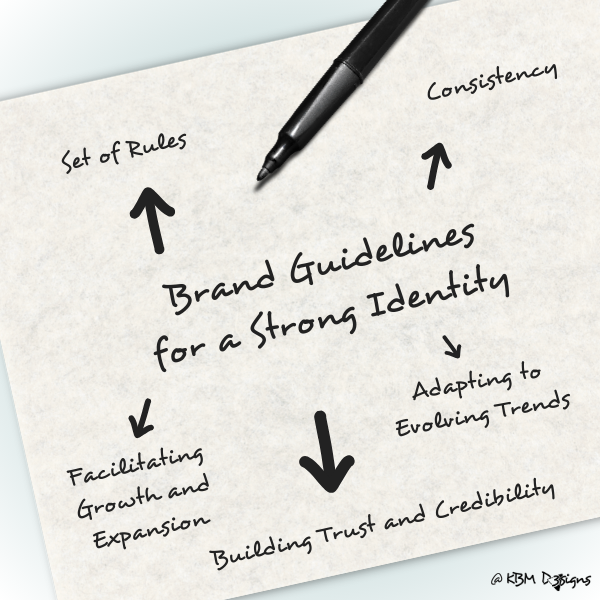
Article Content:
- What are Brand Guidelines?
- Definition
- Consistency is Key
- Building Trust and Credibility
- Facilitating Brand Growth and Expansion
- Adapting to Evolving Trends
- Frequently Asked Questions about “Brand Guidelines”
1. What are Brand Guidelines?
Set of Rules
Brand guidelines, also known as brand standards or brand manuals, are a set of rules and specifications that dictate how a brand should be represented visually and verbally. These guidelines encompass elements such as logo usage, color palette, typography, imagery style, messaging tone, and more. By providing clear instructions on how these elements should be utilized, brand guidelines ensure that all communications and marketing materials align with the brand’s identity and values.
Consistency is Key
Consistency is key in building brand recognition and loyalty. When consumers encounter a brand across different platforms and mediums, they should immediately recognize it based on visual and verbal cues. Brand guidelines help maintain this consistency by establishing uniformity in design and messaging, regardless of whether the brand is communicating through social media, print ads, websites, printed marketing materials or other channels. Consistent branding reinforces brand recall and strengthens the brand’s position in the minds of consumers.
Building Trust and Credibility
A cohesive brand identity instills confidence in consumers. When a brand presents itself in a consistent manner, it signals professionalism and reliability. Consumers are more likely to trust a brand that appears organized and coherent in its messaging and visual presentation. Brand guidelines provide a framework for ensuring that every interaction with the brand reinforces its credibility, ultimately leading to stronger customer relationships and loyalty.
Facilitating Brand Growth and Expansion
As businesses grow and expand into new markets or product categories, maintaining a consistent brand identity becomes even more challenging yet crucial. Brand guidelines serve as a valuable resource for internal teams and external partners, providing them with clear instructions on how to represent the brand effectively. Whether it’s designing new packaging, launching a website, or creating advertising campaigns, adherence to brand guidelines ensures that the brand’s identity remains intact, regardless of the context or audience.
Adapting to Evolving Trends
While brand guidelines provide a set of rules to follow, they should also allow for flexibility to adapt to evolving trends and consumer preferences. A brand that remains rigid and unresponsive to change risks becoming outdated and irrelevant. Therefore, brand guidelines should be periodically reviewed and updated to reflect shifts in the market landscape while staying true to the brand’s core identity. This balance between consistency and adaptability is essential for long-term brand success.
In conclusion, in a crowded marketplace where consumers are inundated with choices, establishing a strong and consistent brand identity is critical. It is the foundation for differentiation and the building of long-term relationships with customers. Brand guidelines serve as the cornerstone of brand identity. They provide a framework for maintaining consistency, building trust, and facilitating brand growth. By adhering to these guidelines, companies can ensure that every interaction with their brand reinforces their unique identity and values. This ultimately drives success in the marketplace.
2. Definition
Logo Usage:
Brand guidelines outline how the logo should be used in various contexts. This includes specifications on size, placement, color variations (such as full-color, black and white, or grayscale), and clear space requirements to ensure visibility and impact. Guidelines may also specify what not to do with the logo, such as stretching or altering its proportions.
Color Palette:
Consistent colors are essential for brand recognition. Brand guidelines establish a specific color palette, including primary and secondary colors, along with their corresponding hex codes or Pantone numbers. This ensures that colors remain consistent across different mediums and printing processes, maintaining visual cohesion and reinforcing brand identity.
Typography:
Fonts play a crucial role in conveying a brand’s personality and tone. Brand guidelines dictate which fonts to use for headings, body text, and other elements, as well as guidelines for font sizes, line spacing, and text alignment. By standardizing typography, brands can maintain a cohesive look and feel across all communications.
Imagery Style:
Images and visuals contribute significantly to a brand’s storytelling and evoke specific emotions or associations. Brand guidelines may include guidelines for photography style, illustration style, or graphic elements to be used. This ensures that all imagery aligns with the brand’s aesthetic and reinforces its values and messaging.
Messaging Tone:
The tone of voice used in brand communications reflects the brand’s personality, values, and target audience. Ultimately, brand guidelines provide guidance on language usage, including tone, style, and vocabulary. Whether the brand’s voice is formal, friendly, authoritative, or playful, consistency in message tone helps establish a strong brand identity and fosters trust with consumers.
Additional Elements:
Depending on the brand’s complexity and needs, their guidelines may include specifications for additional elements such as iconography, patterns, motion graphics, or packaging design. These elements contribute to the overall brand experience and should align with the brand’s visual identity and values.
Overall, brand guidelines serve as a comprehensive reference point for anyone involved in creating or representing the brand, including designers, marketers, copywriters, and external partners. By providing clear and detailed instructions on how to use visual and verbal elements consistently, brand guidelines ensure that the brand’s identity remains strong, recognizable, and impactful across all touch-points.
• Brand Guidelines The Basis For Style Guide & Mood-board
While related, “brand guidelines,” “brand style guide,” and “brand mood board” are not interchangeable terms, as they serve different purposes within the branding process:
Brand Guidelines:
As previously described, brand guidelines (also known as brand standards or brand manuals) are a comprehensive set of rules and specifications that dictate how a brand should be represented visually and verbally across all channels and touch-points. The brand manual encompasses a wide range of elements such as logo usage, color palette, typography, imagery style, messaging tone, and more. They provide detailed instructions to ensure consistency and coherence in brand presentation.
Brand Style Guide:
A brand style guide is a component of brand guidelines. It focuses specifically on visual elements such as logo usage, color palette, typography, and imagery style. A brand style guide provides detailed instructions on how these visual elements should be used to maintain consistency in brand identity across different mediums. It serves as a reference for designers and marketers to ensure that all visual assets adhere to the brand’s aesthetic and messaging guidelines.
Brand Mood Board:
A brand mood board is a visual collage that captures the overall look, feel, and mood of a brand. It typically includes images, color palettes, typography samples, textures, and other visual elements that evoke the desired aesthetic and emotional response associated with the brand. While a brand mood board can be a valuable tool for brainstorming and conceptualizing the brand’s visual identity, it is not a substitute for comprehensive brand guidelines or style guides. Instead, it serves as an inspirational starting point for developing the visual aspects of the brand.
To maintain brand consistency, brand guidelines provide comprehensive rules and specifications. Meanwhile, a brand style guide focuses specifically on visual elements. And a brand mood board serves as an inspirational tool to capture the brand’s aesthetic and mood. Each of these components plays a unique role in the branding process. Together, however, they ensure that the brand identity is cohesive, powerful, and resonates with the target audience.
3. Consistency is Key
Consistency serves as a cornerstone in building brand recognition and fostering consumer loyalty. It ensures that a brand’s identity remains steadfast and recognizable across diverse platforms and mediums. Here’s an expanded look at why consistency is paramount in branding:
Instant Recognition:
Consistent branding enables consumers to identify a brand swiftly, even amidst a sea of competitors. Whether encountering a brand on social media, a print advertisement, a website, or any other channel, consistent visual and verbal cues trigger immediate recognition. This instant recognition cultivates familiarity and trust, making it more likely for consumers to engage with the brand and consider its products or services.
Establishes Trust:
Consistency breeds trust. When consumers consistently encounter a brand that maintains uniformity in design and messaging, it signals reliability and professionalism. Trust is a foundational element in building long-term relationships with consumers. Brands that consistently deliver on their promises and maintain a cohesive identity are perceived as more trustworthy, thereby strengthening consumer loyalty and advocacy.
Reinforces Brand Recall:
Consistent branding reinforces brand recall, ensuring that the brand remains top-of-mind for consumers. When individuals encounter consistent visual and verbal cues associated with a brand across different touch-points, it reinforces their memory of the brand. This heightened brand recall increases the likelihood of consumers choosing the brand when making purchasing decisions, contributing to brand preference and market share.
Strengthens Brand Positioning:
Consistent branding reinforces the brand’s position in the minds of consumers. Through consistent design elements, such as logo usage, color palette, typography, and imagery style, a brand communicates its unique identity and values. Over time, this consistent presentation cultivates a distinct brand image that sets it apart from competitors. Consistent messaging reinforces the brand’s positioning in the marketplace, clarifying its value proposition and resonating with its target audience.
Enhances Customer Experience:
Consistent branding creates a seamless and cohesive customer experience across various touch-points. Whether interacting with the brand online, in-store, or through offline marketing or other channels, consumers encounter a unified brand identity that enhances their overall experience. This consistency reduces confusion and instills confidence in consumers, leading to positive interactions and increased satisfaction.
Consistent brand management is critical for building brand awareness, consumer trust and loyalty, brand recall, brand positioning and the overall customer experience. Brand guidelines play a critical role in maintaining this consistency. They provide clear guidance on how the brand should be represented. That means visual as well as verbal across multiple platforms and media. By adhering to these guidelines, brands can create a strong and cohesive identity. An identity that resonates with consumers and drives long-term success in the marketplace.
4. Building Trust and Credibility
Building trust and credibility is essential for any brand aiming for long-term success. Here’s a detailed exploration of how a cohesive brand identity contributes to this goal:
Confidence through Consistency:
A cohesive brand identity instills confidence in consumers. When a brand presents itself consistently across various touch-points, it demonstrates reliability and professionalism. Consumers are reassured by the predictability and coherence of a brand’s messaging and visual presentation. Consistency fosters a sense of trust, as consumers know what to expect from the brand, leading to increased confidence in its products or services.
Professionalism and Reliability:
Consistent branding signals professionalism and reliability to consumers. Brands that follow a set of brand guidelines appear organized and intentional in their communications. A cohesive brand identity reflects careful planning and attention to detail, whether it’s through the consistent use of logo, color palette, typography, or messaging tone. This applies to all offline marketing materials, such as professional business cards, thank you cards, or loyalty cards. Using professional materials enhances the brand’s credibility with consumers, making them more likely to engage with the brand and make purchases.
Trustworthiness:
Trust is the foundation of any successful relationship, including the one between a brand and its customers. Consistent branding builds trustworthiness by creating a sense of familiarity and dependability. When consumers consistently encounter a brand that maintains uniformity in its presentation, they perceive it as reliable and trustworthy. This trustworthiness is crucial for persuading consumers to choose the brand over competitors and to develop long-term loyalty.
Reinforcing Credibility:
Brand guidelines play a crucial role in reinforcing a brand’s credibility. By providing a framework for consistent branding, brand guidelines ensure that every interaction with the brand reinforces its credibility. Whether it’s through advertising campaigns, social media posts, customer service interactions, or product packaging, adherence to brand guidelines maintains the brand’s integrity and authenticity. Consistent branding builds credibility over time, as consumers come to associate the brand with positive experiences and reliable offerings.
Strengthening Customer Relationships and Loyalty:
Consistent branding leads to stronger customer relationships and loyalty. When consumers trust a brand and perceive it as credible, they are more likely to develop emotional connections with the brand. These emotional connections foster loyalty, leading to repeat purchases and advocacy. By consistently delivering on its brand promise and maintaining a cohesive identity, a brand can cultivate loyal customers who become advocates for the brand, further enhancing its credibility and reputation.
Brand guidelines are crucial for brand growth and expansion. They offer clear direction to internal teams and external partners while preserving brand identity in the face of new challenges. Following brand guidelines allows for flexibility within a framework and ensures quality and consistency in brand-related activities. Companies can navigate the complexities of growth and expansion by adhering to brand guidelines. All while maintaining a strong and consistent brand identity that resonates with consumers around the world.
5. Facilitating Brand Growth and Expansion
Facilitating brand growth and expansion is a complex endeavor that requires careful consideration of a brand’s identity and how it translates across new markets, products, and audiences. Here’s a detailed exploration of how brand guidelines play a crucial role in this process:
Challenges of Growth and Expansion:
As businesses expand into new markets or product categories, maintaining a consistent brand identity becomes increasingly challenging. Different cultures, consumer preferences, and competitive landscapes necessitate adaptation while still preserving the essence of the brand. Without clear guidelines, inconsistencies may arise in how the brand is represented, leading to confusion among consumers and diluting brand equity.
Valuable Resource for Teams and Partners:
Brand guidelines serve as a valuable resource for internal teams and external partners involved in brand-related activities. Whether it’s marketing teams, designers, agencies, or manufacturers, clear instructions provided in brand guidelines ensure that everyone is aligned on how to represent the brand effectively. This alignment minimizes misunderstandings and ensures that all brand-related activities are cohesive and in line with the brand’s identity and values.
Preserving Brand Identity:
Adherence to brand guidelines is essential for preserving the brand’s identity amid growth and expansion. Whether designing new packaging, launching a website, or creating advertising campaigns, brand guidelines provide clear instructions on how to maintain consistency in visual elements, messaging tone, and overall brand presentation. This consistency reinforces brand recognition and strengthens the brand’s position in the minds of consumers, regardless of the context or audience.
Flexibility within Framework:
While brand guidelines provide a framework for consistency, they also allow for flexibility to adapt to new markets and audiences. Guidelines may include provisions for localization, allowing for adjustments in messaging or imagery to resonate with different cultural norms and preferences. Similarly, guidelines may accommodate variations in product lines or target demographics while still maintaining a cohesive brand identity.
Ensuring Quality and Cohesion:
Consistency in brand representation is not only important for maintaining brand equity but also for ensuring the quality and cohesion of brand-related assets. Adherence to brand guidelines helps uphold quality standards by providing clear benchmarks for design, messaging, and overall brand presentation. This consistency enhances consumer trust and perception of the brand’s professionalism and reliability, driving growth and expansion efforts forward.
Brand guidelines are crucial for brand growth and expansion. They offer clear direction to internal teams and external partners while preserving brand identity in the face of new challenges. Following brand guidelines allows for flexibility within a framework and ensures quality and consistency in brand-related activities. Companies can navigate the complexities of growth and expansion by adhering to brand guidelines. All while maintaining a strong and consistent brand identity that resonates with consumers around the world.
6. Adapting to Evolving Trends
Adapting to evolving trends is essential for brands to remain relevant and competitive in a dynamic marketplace. Here’s a detailed exploration of how brand guidelines should allow for flexibility while maintaining consistency:
Responding to Changing Consumer Preferences:
Consumer preferences and behaviors evolve over time, influenced by factors such as cultural shifts, technological advancements, and economic conditions. Brands must stay attuned to these changes and adapt their strategies accordingly to remain appealing to their target audience. Brand guidelines should allow for flexibility in messaging, imagery, and communication channels to effectively resonate with evolving consumer preferences.
Embracing Emerging Technologies:
Technological advancements continually reshape how consumers interact with brands. From social media platforms to augmented reality experiences, brands must leverage emerging technologies to engage consumers effectively. Brand guidelines should provide guidance on integrating new technologies into brand communication strategies while maintaining consistency with the brand’s core identity. This adaptability ensures that the brand remains innovative and stays ahead of the curve.
Navigating Cultural Shifts:
Societal trends and cultural norms evolve over time, influencing consumer perceptions and expectations. Brands must be mindful of cultural sensitivities and adapt their messaging and imagery to reflect changing cultural landscapes. Brand guidelines should allow for cultural adaptation while ensuring that the brand’s values and principles remain intact. This flexibility enables brands to connect with diverse audiences while maintaining authenticity and relevance.
Remaining Competitive in the Market:
The competitive landscape is constantly evolving, with new players entering the market and existing competitors innovating their offerings. Brands must continuously assess market trends and competitor strategies to stay competitive. Brand guidelines should incorporate mechanisms for monitoring industry trends and updating brand strategies accordingly. This adaptability enables brands to differentiate themselves effectively and maintain a competitive edge in the market.
Balancing Consistency and Adaptability:
While adaptability is crucial for staying relevant, brands must also maintain consistency in their brand identity and messaging. Brand guidelines should strike a balance between consistency and adaptability, providing clear parameters for brand expression while allowing for creative interpretation and experimentation. This balance ensures that the brand remains recognizable and cohesive across different touch-points while remaining responsive to changing market dynamics.
Periodic Review and Updates:
Brand guidelines should be periodically reviewed and updated to reflect shifts in the market landscape and evolving consumer preferences. Regular reviews ensure that brand strategies remain aligned with the brand’s core identity while accommodating changes in the external environment. By staying agile and responsive, brands can effectively navigate evolving trends and maintain relevance in the long term.
However, brand guidelines should be flexible enough to adapt to evolving trends and consumer preferences. They maintain consistency with the brand’s core identity. Balancing consistency and customization with regular review and updates can position brands for long-term success in a dynamic marketplace.
-

Mother’s Day Marketing Ideas for Small Local Businesses
Read the post …: Mother’s Day Marketing Ideas for Small Local Businesses -
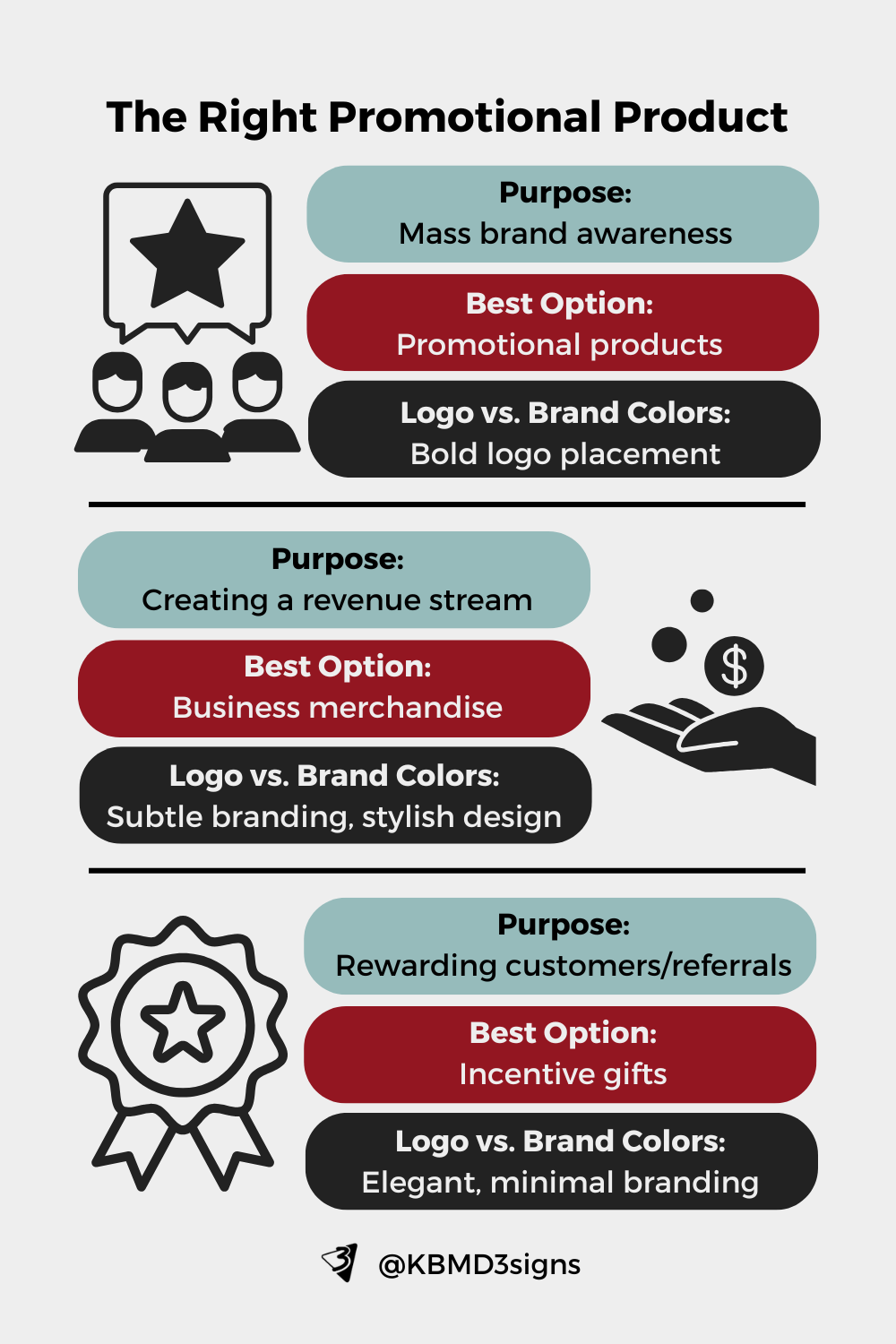
Promotional Products vs. Business Merchandise vs. Incentive Gifts
Read the post …: Promotional Products vs. Business Merchandise vs. Incentive Gifts -
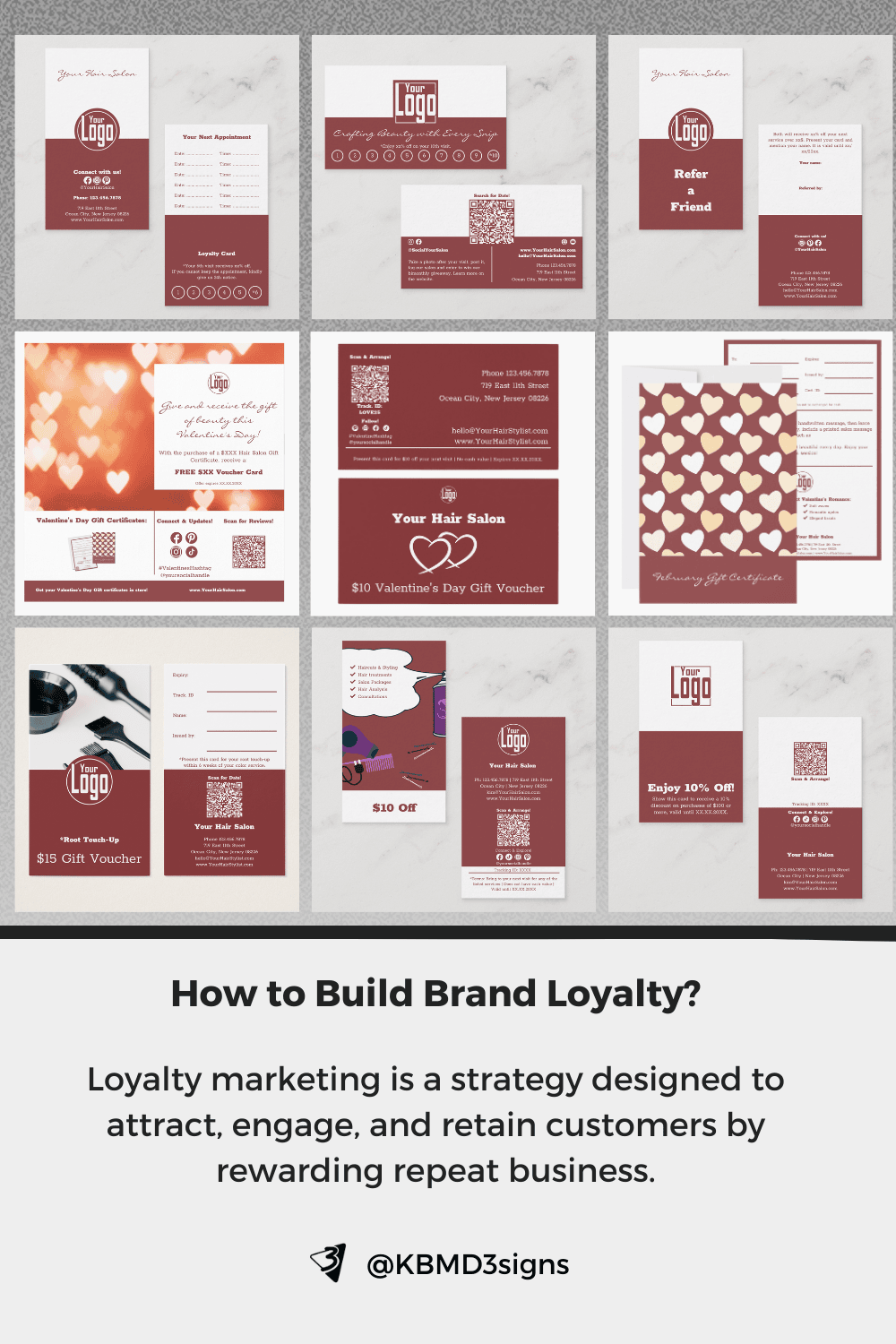
How to Build Brand Loyalty for a Small Local Business
Read the post …: How to Build Brand Loyalty for a Small Local Business
7. Frequently Asked Questions about “Brand Guidelines”
Brand guidelines are a set of rules and specifications that dictate how a brand should be represented visually and verbally. They are crucial for maintaining consistency in brand identity across different platforms and mediums, which helps reinforce brand recognition, build trust with consumers, and strengthen the brand’s position in the marketplace.
Brand guidelines typically encompass various elements such as logo usage, color palette, typography, imagery style, messaging tone, and more. These elements provide clear instructions on how to maintain consistency in brand presentation across different communication channels.
Brand guidelines provide a framework for ensuring that all communications and marketing materials align with the brand’s identity and values. By establishing rules and specifications for visual and verbal elements, brand guidelines help maintain uniformity in design and messaging across different platforms and mediums, thereby reinforcing brand recognition and trust.
Brand guidelines should be periodically reviewed and updated to reflect shifts in the market landscape, emerging trends, and evolving consumer preferences. Regular updates ensure that brand strategies remain aligned with the brand’s core identity while remaining responsive to changes in the external environment.
While related, brand guidelines and a brand style guide serve different purposes. Brand guidelines provide comprehensive rules and specifications for maintaining consistency in brand identity across all channels and touch-points. A brand style guide, on the other hand, focuses specifically on visual elements such as logo usage, color palette, typography, and imagery style.
Brand guidelines should allow for flexibility to adapt to different markets, cultural norms, and target demographics while maintaining consistency with the brand’s core identity. This flexibility enables brands to tailor their messaging and visual presentation to resonate effectively with diverse audiences.
Creating and implementing brand guidelines is typically the responsibility of the marketing or branding team within an organization. However, input may also be sought from other departments such as design, communications, and product development to ensure that the guidelines reflect the brand’s overall strategy and objectives.
Enforcing brand guidelines involves educating internal teams and external partners on the importance of consistency in brand representation and providing resources and training to help them adhere to the guidelines. Regular audits and reviews can also be conducted to ensure compliance and identify areas for improvement.
Yes, brand guidelines should evolve over time to reflect changes in the market landscape, emerging trends and evolving consumer preferences. However, updates can be made through a collaborative process involving key stakeholders, with changes communicated effectively to ensure consistent implementation.
Brand guidelines play a crucial role in building brand equity by reinforcing brand recognition, fostering consumer trust and loyalty, and strengthening the brand’s position in the marketplace. By providing a consistent framework for brand representation, brand guidelines contribute to long-term success by maintaining brand integrity and relevance.
-
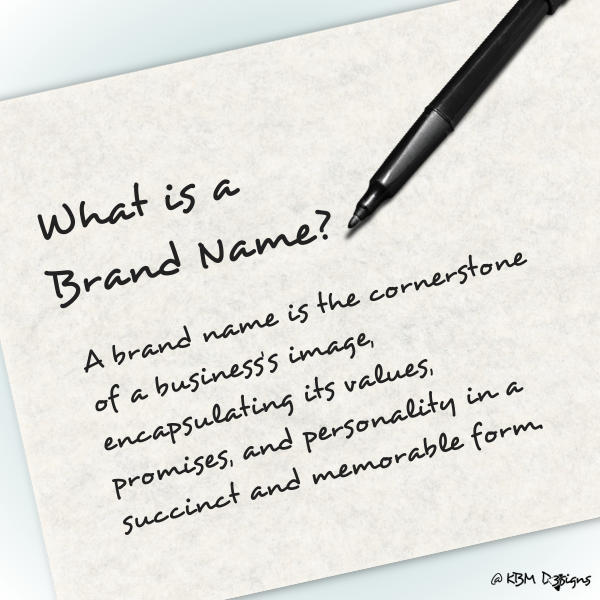
What Is a Brand Name? Why Is It Important?
Read the post …: What Is a Brand Name? Why Is It Important? -

What Is A Target Market, Target Customers, And Target Audience?
Read the post …: What Is A Target Market, Target Customers, And Target Audience? -
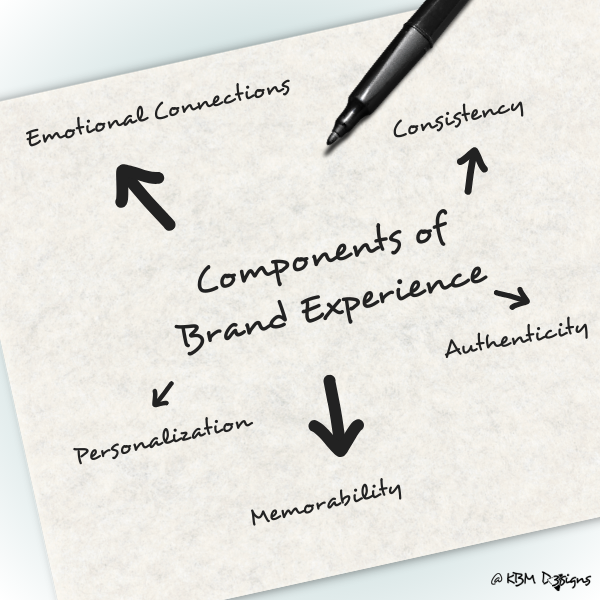
What Is Brand Experience? Connect With Consumers
Read the post …: What Is Brand Experience? Connect With Consumers


